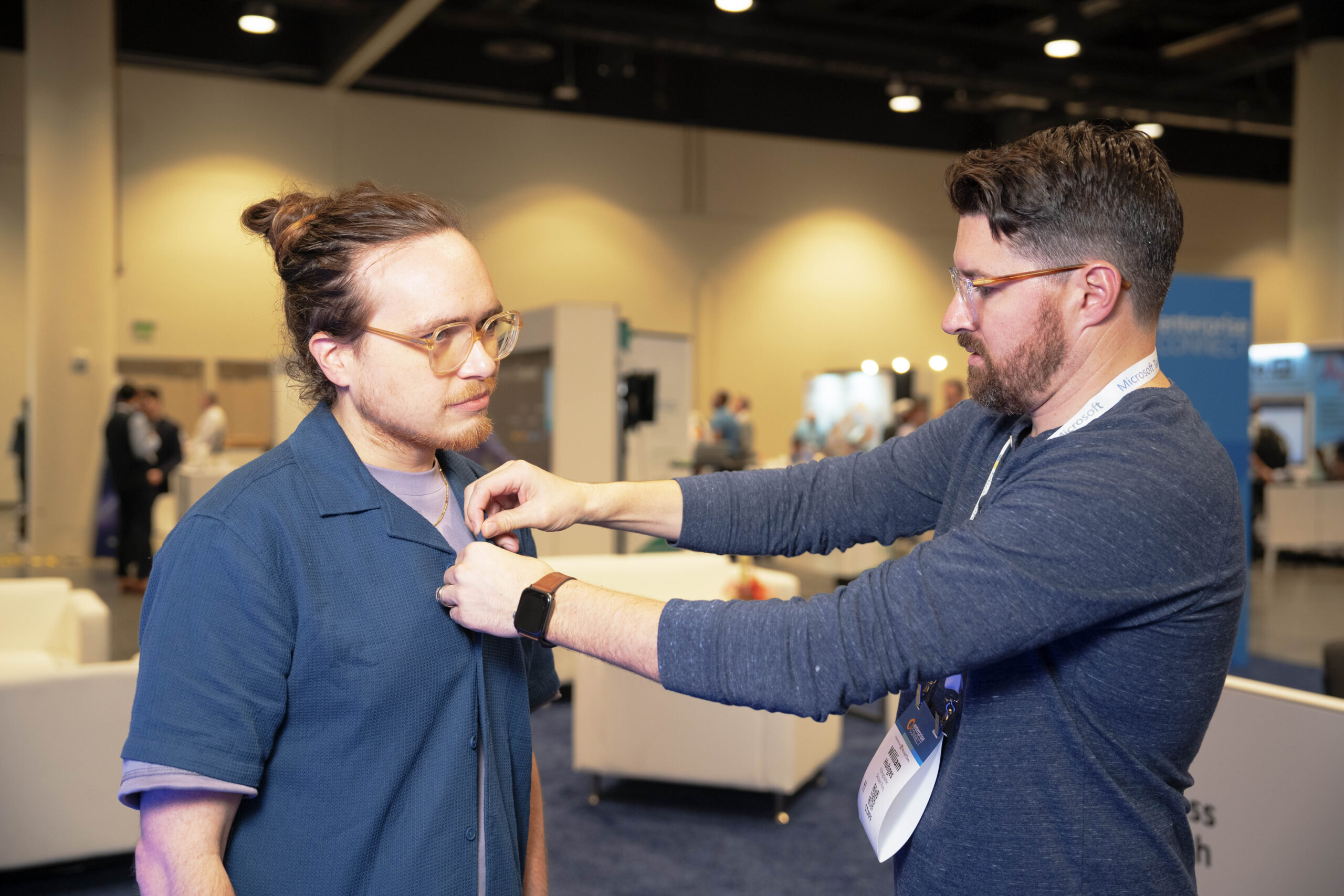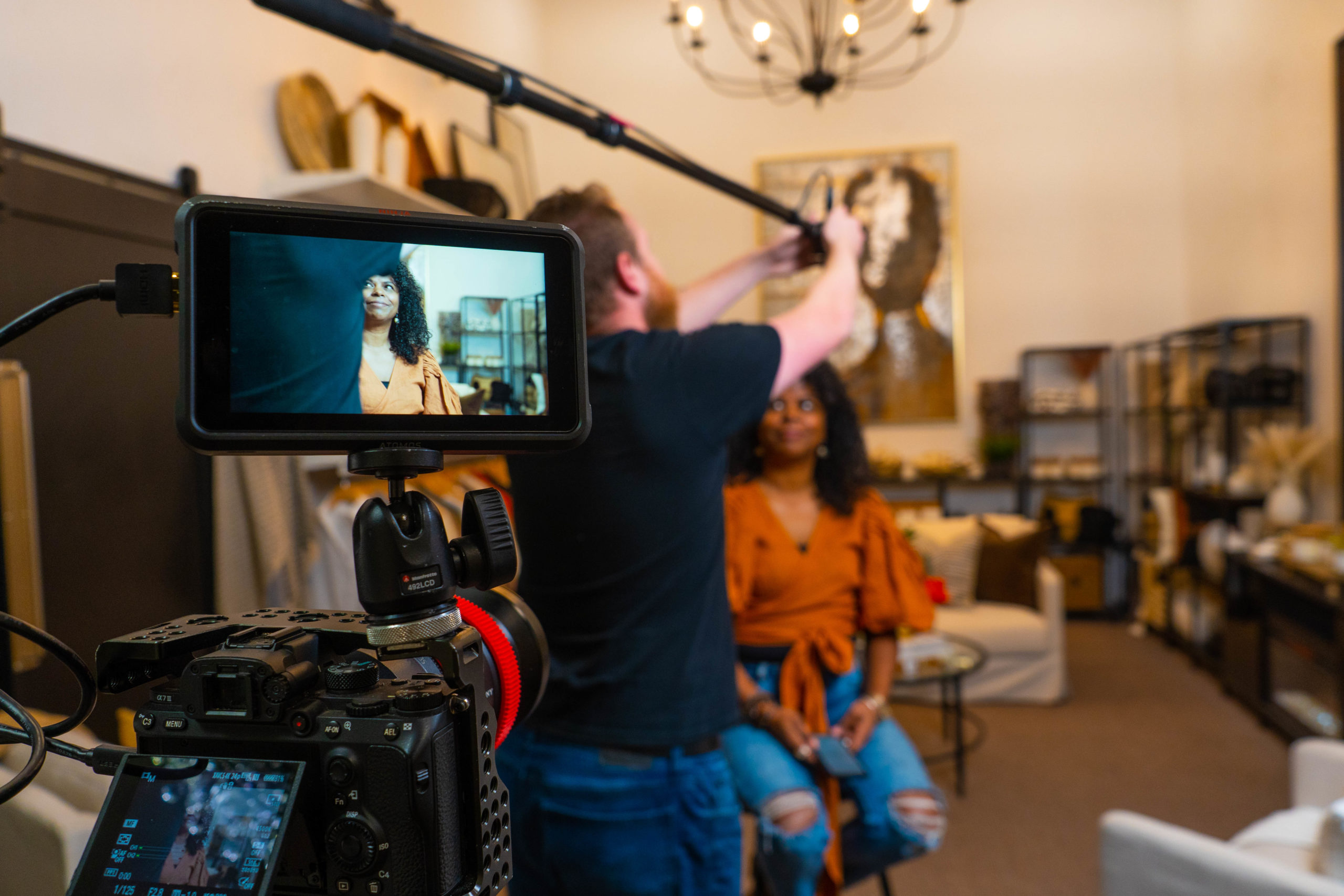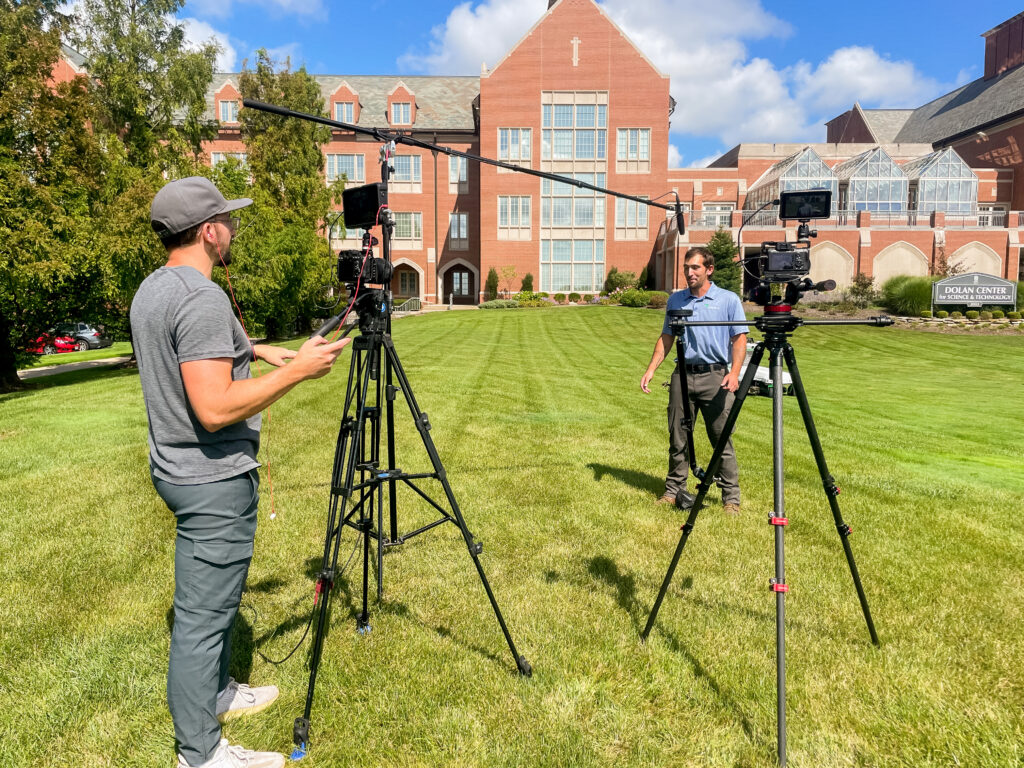In the realm of video production, achieving high-quality audio is just as crucial as capturing stunning visuals. I’ve always said that bad audio can ruin great video, so selecting the right microphone for your project can significantly impact the overall quality of your content, and how your audience will perceive your brand. In this blog post, we’ll explore the differences between four popular microphone options that we typically use on our video productions in the Washington DC Area Lavalier microphones, shotgun microphones on a boom pole, camera-mounted shotgun microphones, and handheld microphones.

- Lavalier Microphones

(Wireless) Lavalier microphones, commonly known as Lav or lapel mics, are small, discreet microphones that can be easily clipped to clothing. They are an excellent choice for scenarios where the speaker needs to move freely or when a more inconspicuous setup is required.
Audio Quality: Lavalier microphones provide good audio quality, capturing clear and direct sound from the speaker. However, the proximity to the speaker’s mouth is crucial for optimal results. Having a small mic element could prevent you from getting the fullest sound possible, but with a little bit of audio editing, these little devices sound great, and are among the quickest and most convenient ways to get a mic closest the audio source (the subject’s mouth).
Visibility on Camera: Lavalier microphones are visible on camera, but small enough to not be overpowering in the frame. They are ideal for quick interviews, on-stage presentations, and other situations where a subject is moving around, or speed in setup is vital.
Scenarios: Lavalier microphones are perfect for on-the-go situations, interviews, and documentary-style filming where the speaker needs to move around without being encumbered by a microphone.
Cost: Lavalier microphones are generally more affordable compared to other options, making them a cost-effective choice for many videographers. A nice, solid option is the Rode Wireless Go II, which costs around $250
- Shotgun Microphones on Boom Poles

Shotgun microphones are directional microphones designed to capture sound from a specific direction, minimizing ambient noise. When mounted on a boom pole, they become a versatile tool for capturing high-quality audio in various settings. If we have time to set it up on-site, this is our preferred method of audio capture on our video productions. With a larger Mic element, the sound is so much more robust and crisp, but of course at the cost of less flexibility in your camera frame since it needs to be mounted out-of-frame, but as close to the subject as possible which can pose some potential issues.
Audio Quality: Shotgun microphones on boom poles excel in capturing focused and directional audio, making them ideal for capturing dialogue in controlled environments. The benefit is a true-to-life sound that wont need much attention in post production.
Visibility on Camera: While the shotgun microphone on a boom pole is visible, it is often positioned out of the camera frame unlike a lavalier mic which is visible and in-frame. This setup provides a compromise between visibility and audio quality.
Scenarios: Boom-mounted shotgun microphones are suitable for narrative filmmaking, scripted scenes, and controlled interviews, where the mic can be mounted in a static position above the subject and out-of-frame, or easily handheld in a scene.
Cost: Shotgun microphones on boom poles can range in price, with higher-end models offering superior audio quality but at a higher cost. Some great options range i
n the $200-500 ballpark, but you have to consider the XLR connection, which most smaller cameras don’t have, so you might have to buy some additional equipment.
- Camera-Mounted Shotgun Microphones

Camera-mounted shotgun microphones are attached directly to the camera, providing a convenient and portable solution for capturing directional audio. Having the microphone on the camera limits your ability to get the mic close to the source, meaning you’ll be picking up the entire room’s audio, but in some cases that might be valuable and vital to the video.
Audio Quality: While not as directional as boom-mounted options, camera-mounted shotgun microphones still offer good audio quality, especially when compared to built-in camera microphones. If you want really nice-sounding room audio, rather than one specific person speaking, this might be your best option. However, capturing an interview with this mic might give you an echo, or pick up other unwanted sounds in the room.
Visibility on Camera: These microphones aren’t visible in the camera frame since they are mounted on the camera itself.
Scenarios: Camera-mounted shotgun microphones are suitable for run-and-gun filmmaking, documentaries, and situations where a separate audio operator is not practical.
Cost: Camera-mounted shotgun microphones are often more affordable than their boom-mounted counterparts, offering a balance between convenience and cost-effectiveness. You can typically find these for cheaper, but there are higher-end options offered around the $250 mark that we have used for some video projects in the past with great results.
- Handheld Microphones
Handheld Microphones are for a completely different use in Video Production. Where the above options are attempting to stay hidden or barely noticeable, a handheld microphone is purposefully on-camera. You’ll see them in news reports or man-on-the-street style interviews.
Audio Quality: Known for excellent audio capture, handheld microphones are versatile and can capture clear, rich sound directly from the source.
Visibility on Camera: Clearly visible but can be used creatively in shots, adding a dynamic element to the visuals.
Scenarios: Ideal for live presentations, interviews, on-the-spot reporting, and scenarios where the speaker needs to engage with the audience.
Cost: Handheld microphones come in a wide price range, offering options for various budgets. There are even ways to adapt some wireless lavalier microphones to be a handheld interface.

Choosing the right microphone for video production depends on various factors, including the specific requirements of your project, budget constraints, and the level of control you have over the shooting environment. Whether you opt for a discreet Lavalier microphone, a directional shotgun microphone on a boom pole, a camera-mounted shotgun microphone, or a handheld, understanding the strengths and limitations of each option will empower you to capture the best possible audio for your video content.
If you’re looking for a top-notch video production team to help you create content check out our website at SkipperFilms! Our expertise spans a wide range of industries, including but not limited to: promotional videos, corporate and business content, travel and tourism videos, and conference highlights. So whether you’re looking to showcase your brand, capture your next big event, or simply bring your vision to life, we’ve got you covered. Get in touch with us today to see how we can help!


